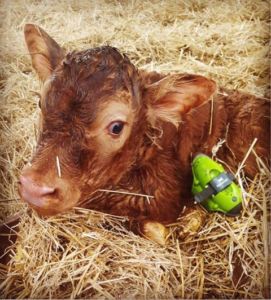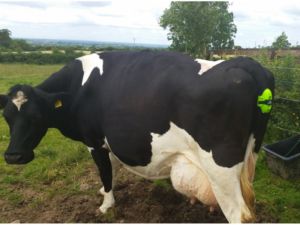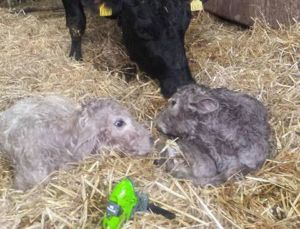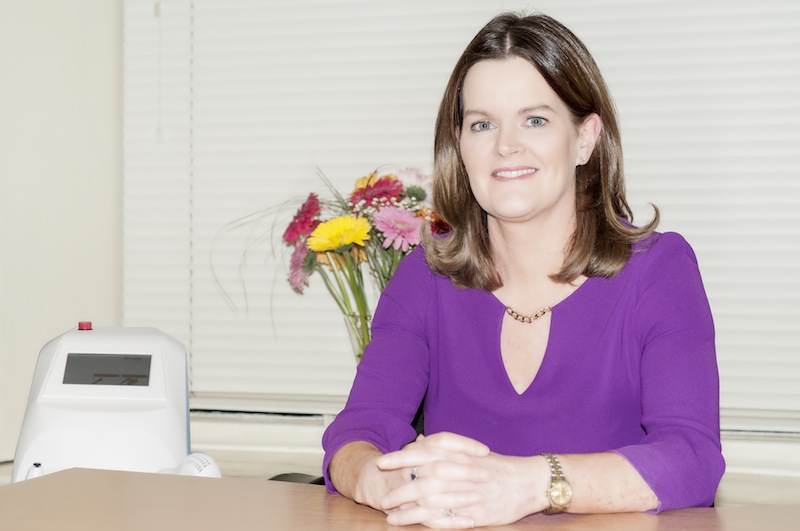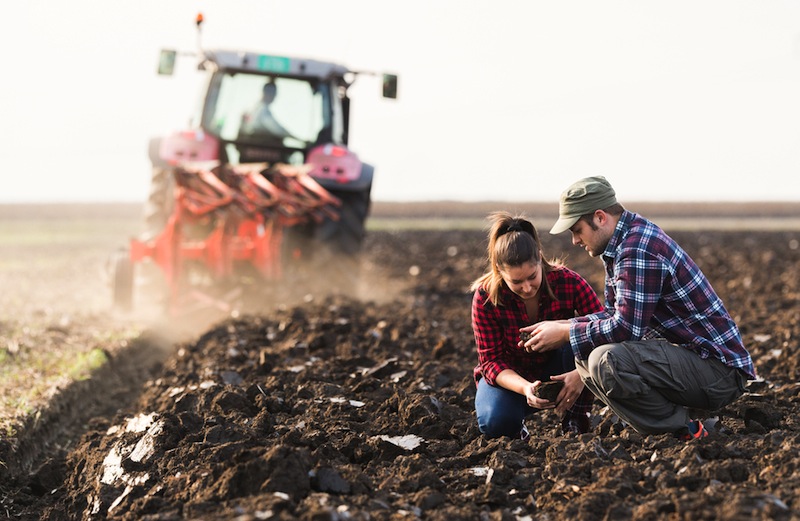One definition of an entrepreneur is someone who develops a solution to an age-old problem and brings it to a global market. Emmet Savage and Niall Austin did it. This is the story of Moocall.
Emmet Savage’s first introduction to farming was working on a small local farm during his school holidays. In later life, he became an entrepreneur running businesses within both the construction and fashion industries.
In 2010 he was approached by Niall Austin, a friend, and work colleague, about how losses during calving were having an impact on his family farm.
Austin had an idea. It was to do with a sensor attached to a cow’s tail that could act as an alert for farmers when a cow started to calve. The seed for an international business was sown.
From a trauma to an idea
Austin is a farmer’s son living in Offaly, with a lifetime’s experience of the calving season. He knew the rituals, the sleep-interrupted nights, checking on cows that are close to calving.
Then, in 2010 he experienced the trauma of losing a cow and a calf. It was a significant loss, as the cow was worth over €1,000 and the calf worth half that.
He went looking for solutions to alert farmers when cows were calving. However, the existing solutions were both expensive and intrusive, which meant that they were more likely to cause internal infection.
Putting their heads together, Savage and Austin began developing what was later to become Moocall.
“I brought in Michael Stanley who is the chairman of Cairn homes as an investor at a very early stage.”
The right idea at the right time
“Timing was critical but having a really strong product, and proof of concept were equally so,” says Savage.
“It helped keep everyone focused and got us to where we ultimately are now.
“Niall started to research a non-invasive solution for the beef and dairy farmer, as well as insuring that it would work out in the field. He knew from his knowledge of cow anatomy that you get very precise movements in a cow’s tail, which could be measured, to accurately predict when a calf is going to be born.”
Bringing in the heavyweights
“We set about doing some early stage work in proving this concept. I brought in Michael Stanley who is the chairman of Cairn homes as an investor at a very early stage. So the journey started when Michael and I began to put some financial clout behind Niall’s idea. After about four years of testing, we proved that Niall’s theory was correct, that tail movement can be accurately used to predict a calving.
The science bit
“We have an algorithm that counts the contractions, so when a certain amount of contractions happen, it triggers the Moocall sensor to send a text to the farmer when the cow is one hour away from calving. It’s very accurate with about 95% accuracy for all breeds.”
“We have sold over 20,000 sensors to date, in 36 different countries across the world and have experienced double-digit growth every month since we started.”
The big leap
“We had to get the product right before we launched it,” says Savage, “and even post-launch, we had teething problems. We have resolved these now, and at this stage, we are on a serious growth trajectory.
“We sold our first product on the Irish market in January 2015. Since January 2016 we started to look at foreign markets like the US, France, Germany, Australia, New Zealand, South Korea, and Japan. We have sold over 20,000 sensors to date, in 36 different countries across the world and have experienced double-digit growth every month since we started.”
Being innovative and original
“We have no competitor in the market that is IOT-based, tail mounted and non-invasive.
“It is suitable for all breeds and is fully transferable. The only [kind of] competition we have is a base-station application, which is impractical from a beef farmer’s point of view.
“Our best unique selling point is our cost, we sell our device at €268 plus VAT, and our ‘competitor’ is selling at €3,000 – €4,000. We also have very strong patents in place.”
“In Ireland, 3% of all calvings result in a dead calf and 1.5% result in a dead cow. In 2012 this amounted to a €45 million loss to farmers.”
Getting to market
“We have two main routes to market. The first would be through genetics companies, which is a very successful channel, as the genetics companies have staff calling to farms on a daily or weekly basis and have the trust of the farmer.
“We also sell to all the major co-ops within Ireland and the UK, supplying 450 retail stores in total with our product. Further afield we have taken distribution partners around the world and use their distribution channels to gain market penetration.”
“Our target market is 95% of the world’s dairy and beef operations across the world.”
Market size and age profile
“In Ireland, 3% of all calvings result in a dead calf and 1.5% result in a dead cow. In 2012 this amounted to a €45 million loss to farmers, based on a loss of 68,000 calves and 22,000 cows respectively. It equates to a €225 million loss of revenue to beef and dairy producers in Ireland in the last five years.
“The addressable global market is every country in the world and every operation in the world that has a cow calving on it. Our target market is for anyone with 200 head of cattle or less which fortunately for us covers 95% of the world’s dairy and beef operations across the world.”
Simplicity – easy to understand, easy to use
“Moocall is a very simple plug and play product, and it’s not a difficult product to understand. All you need is a phone with the ability to accept a text for the technology to work, which means that it will work on a smartphone or an old analogue phone. Anyone can use it.”
“Dr. Michael Smurfit is also behind the business, offering significant financial support.”
How many sensors does a farmer need for a 100 cow herd?
“Most of our farmers average between one and two units. Farmers start off by buying one. They get to see how the device works and how it fits into their operation and then decide if an additional unit is needed.”
Getting the money to grow
“The business to date has raised over €4 million in funding,” says Savage.
“Michael Stanley and I were early stage investors. Dr. Michael Smurfit is also behind the business, offering significant financial support. Michael would be on the phone two or three times a week, asking all the right questions and offering all the right support. Even though retired, he is still very much energised by the opportunity.
“In January 2015 we started with just two people and now employ 29 people in the office. I am confident that we will double that, by this time next year.”
“A lot of people get caught up in the bubble of developing a new product. Make sure that whatever you are doing, there is a market for it.”
The second project
“We are currently working on a second project which I believe is equally innovative, equally as disruptive and we hope to launch that product in quarter three this year. It’s in the heat detection space. It will be able to predict when a cow is in heat, as losing a heat cycle in a cow is a significant cost factor for a farmer.
“As a business, we are developing into a two, three and four product company and we see ourselves as potentially the leader in animal wearables in the world.”
What advice would you offer inventors?
“The main thing about a new product or service is to have a clear market fit. A lot of money can be spent developing solutions that are not required.
“A lot of people get caught up in the bubble of developing a new product. Make sure that whatever you are doing, there is a market for it.”

